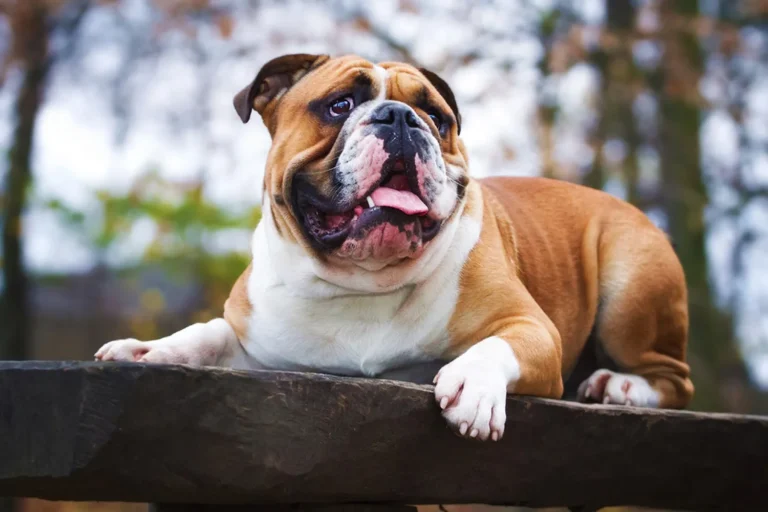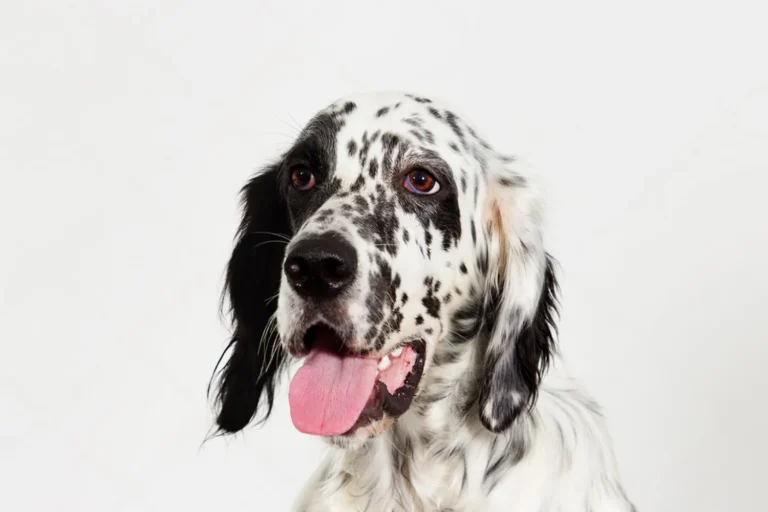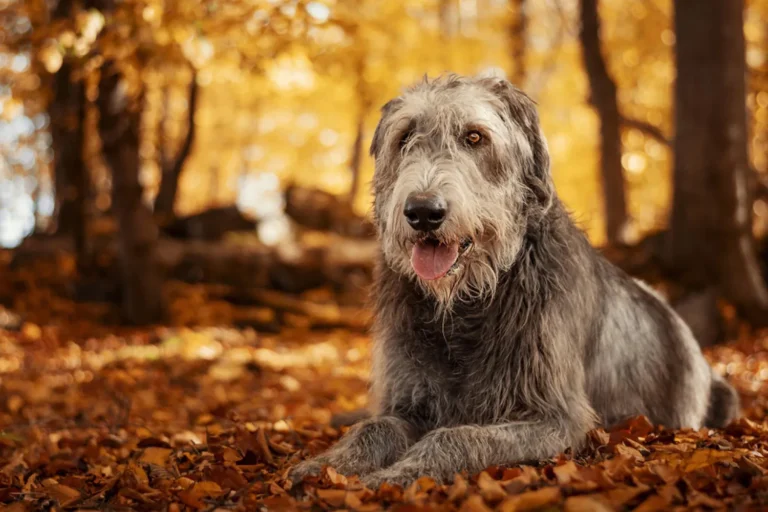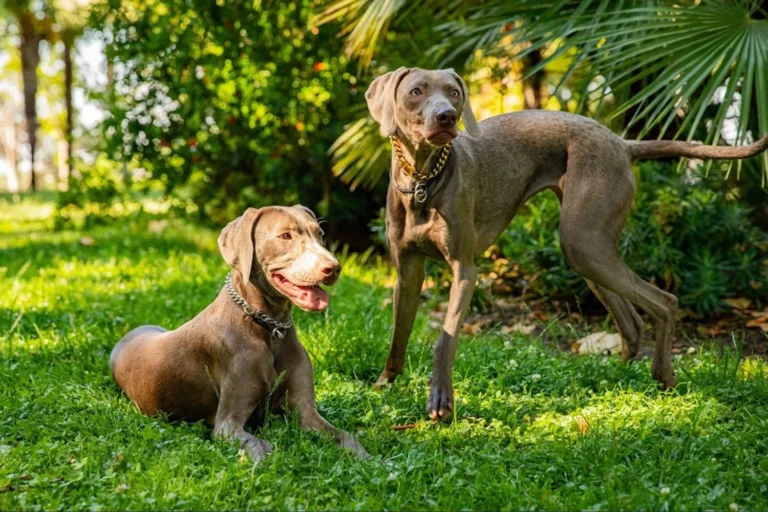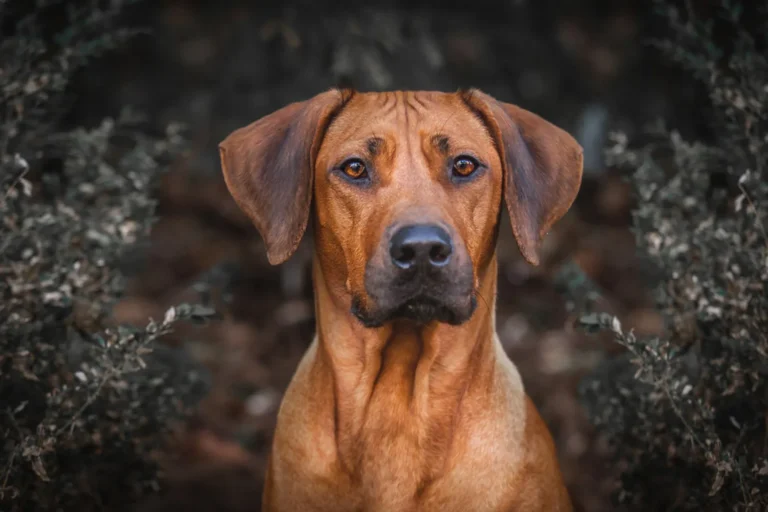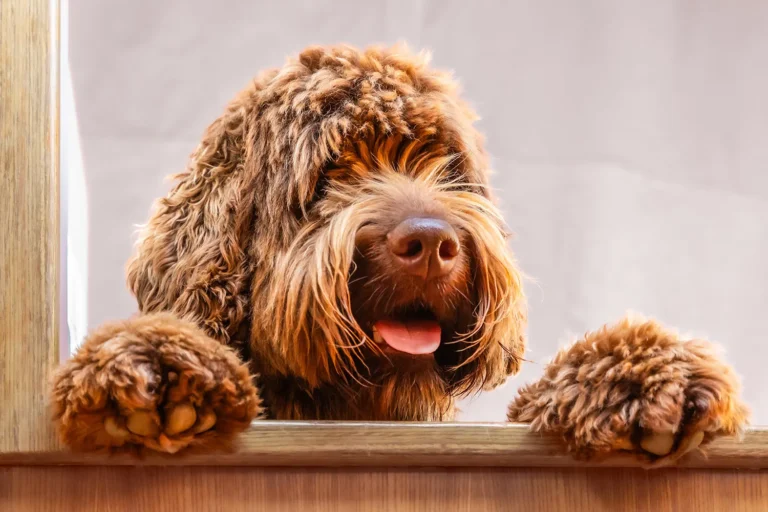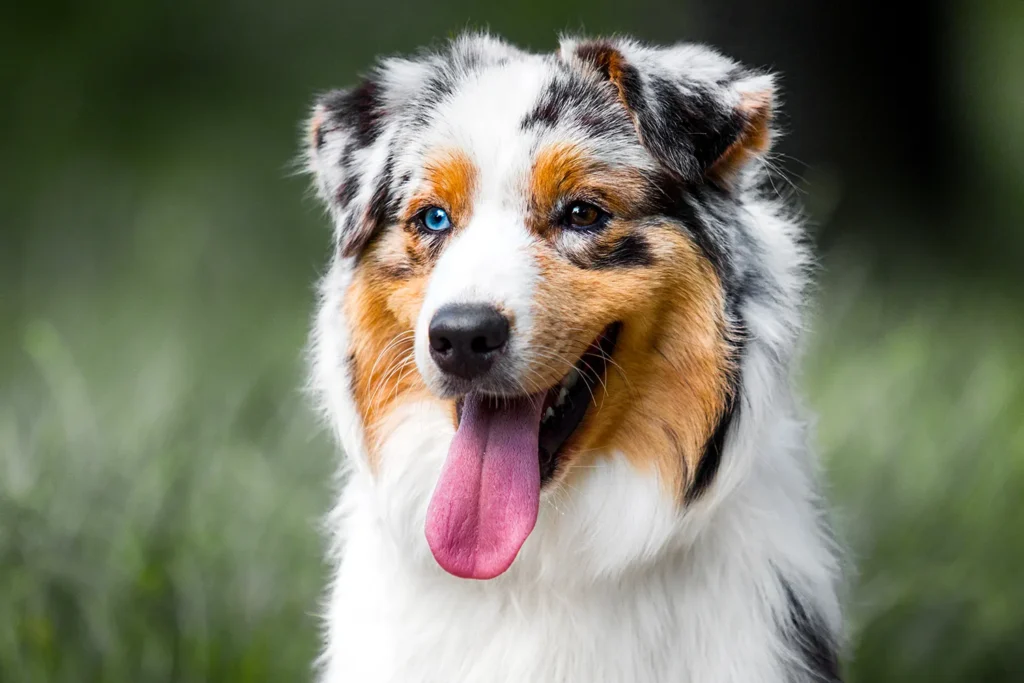
If you’re on the hunt for a sidekick who can keep up with your hikes, your couch snuggles, and your sense of humor, an Australian Shepherd might just be your perfect match. They’re fiercely loyal, seriously fun, and sharp as a tack. My neighbor’s Aussie used to “help” by collecting everyone’s shoes by the door every morning no one trained him to do it, he just figured it out and made it his job. That’s the thing about Aussies: they love having a purpose, even if it’s supervising the backyard squirrels or sticking to you like a shadow.
Be ready to give that big brain and busy body something to do each day. A long walk plus a game of frisbee is a great start; toss in some training drills or a puzzle toy and you’ll see them light up. I like to teach quick tricks during commercial breaks spin, bow, high five because Aussies pick things up fast and love the praise. They can be a bit “herdy,” so guide that instinct with structured play and good recall cues. Brush them regularly (they do shed), keep their minds busy, and they’ll pay you back with endless devotion and the kind of joyful energy that makes every day feel a little more alive.
What Is the History and Origin of the Australian Shepherd?
Despite the name, the Australian Shepherd is as American as a dusty pair of boots. These dogs really made their mark in the Western United States, hustling their way into ranch life during the 1840s Gold Rush. I like to picture them trotting alongside wagons, eyes bright, ready to work the moment someone whistled. That “dogged” nature (I’ll see myself out) is exactly what won over ranchers back then and honestly, it’s what still wins people over today.
What’s funny is that for all we know about how brilliantly Aussies work, their exact genetic backstory remains a bit of a mystery. Most folks agree their striking looks and herding smarts hint at ties to Australian longhaired Collies, German Sheepdogs, and other revered European herding breeds. You can see it in the way an Aussie sizes up a field shoulders low, gaze locked in, like they’re plotting a little chess match with the sheep. I remember visiting a friend’s small ranch in northern Nevada where her blue merle, Tilly, seemed to read my mind. One minute she was sprawled at our feet, the next she was calmly sweeping a few straggling ewes back to the group, almost like she was tidying a room. If you bring an Aussie into a suburban home, that same instinct needs an outlet: daily training, brain games, and a job (even a pretend one) keep them happy. Mine loved “finding” the kids’ socks and “checking” the backyard perimeter before bed. It sounds silly until you see how proud they are of a task well done.
Their intelligence and stamina made Aussies farm favorites, capable of herding even large cattle, and their flair for teamwork earned them a place in the cowboy rodeo circuit and just about every dog sport you can imagine. I once watched an Aussie at a small town rodeo switch gears from crowd pleasing tricks to laser focused stock work in a heartbeat no drama, just competence. That kind of all around ability built a passionate community: the Australian Shepherd Club of America was founded in 1957, and their steady rise culminated in official registration with the American Kennel Club in 1993, thanks to the United States Australian Shepherd Association. All that history to say: if you want a partner who lives to learn, thrive, and do, the Aussie isn’t just a pretty face they’re the heartbeat of a hard day’s work and the wag at the end of it.
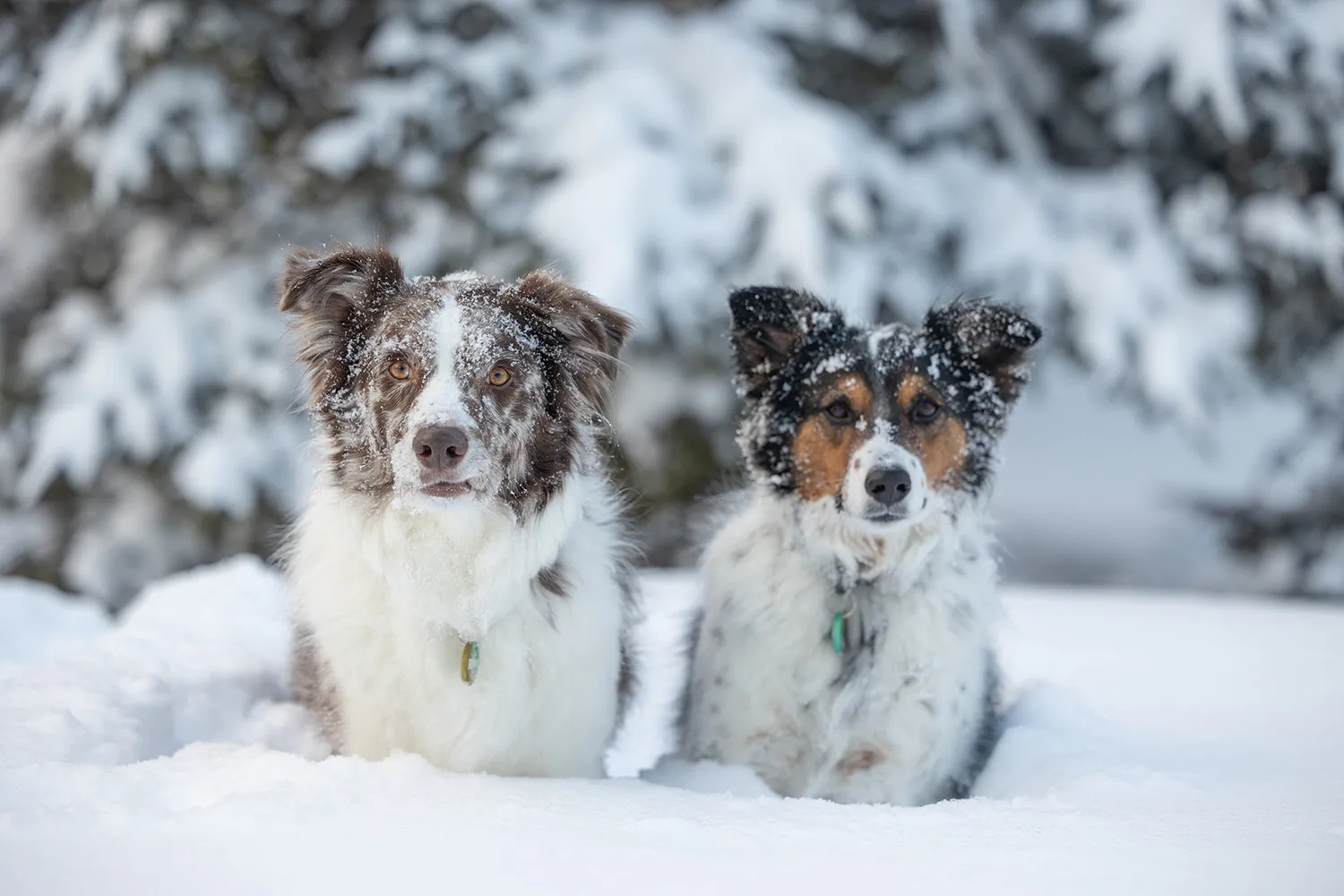
What Is the Australian Shepherd Breed?
The Australian Shepherd is a medium sized working dog with an engine that rarely quits and a mind that’s always clicking. Despite the name, this breed is thought to have been bred, initially, in the United States… but “perfected” in Australia along the way. Their exact genetic story is a bit of a mystery, but many believe Aussies sprang from a mix of Europe’s top performance herding dogs and other athletic breeds known for excelling in dog sports. I like to imagine rugged ranches, globe trotting shepherds, and a practical goal: create a dog that can think fast, move faster, and work all day.
Living with an Aussie shows you exactly what that heritage looks like in real life. They’re clever, eager, and happiest with a job any job. One of mine used to “clock in” every morning by rounding up the kids’ shoes into a neat pile (sometimes the cat too, if I didn’t intervene). If you bring one home, plan on channeling that drive into training and play: agility classes, frisbee, long hikes, scent games, even simple chores like carrying a toy on walks. I’ve had great luck teaching quick tricks between errands five minutes of “spin,” “touch,” and “find it” can save your couch from zoomies later.
At their best, Aussies are the perfect blend of athlete and teammate. They’re born problem solvers who shine when you give them structure and something to do. If you want a dog who can learn anything, keep you moving, and look you in the eye like they’re reading your mind, an Australian Shepherd might be your kind of adventure.
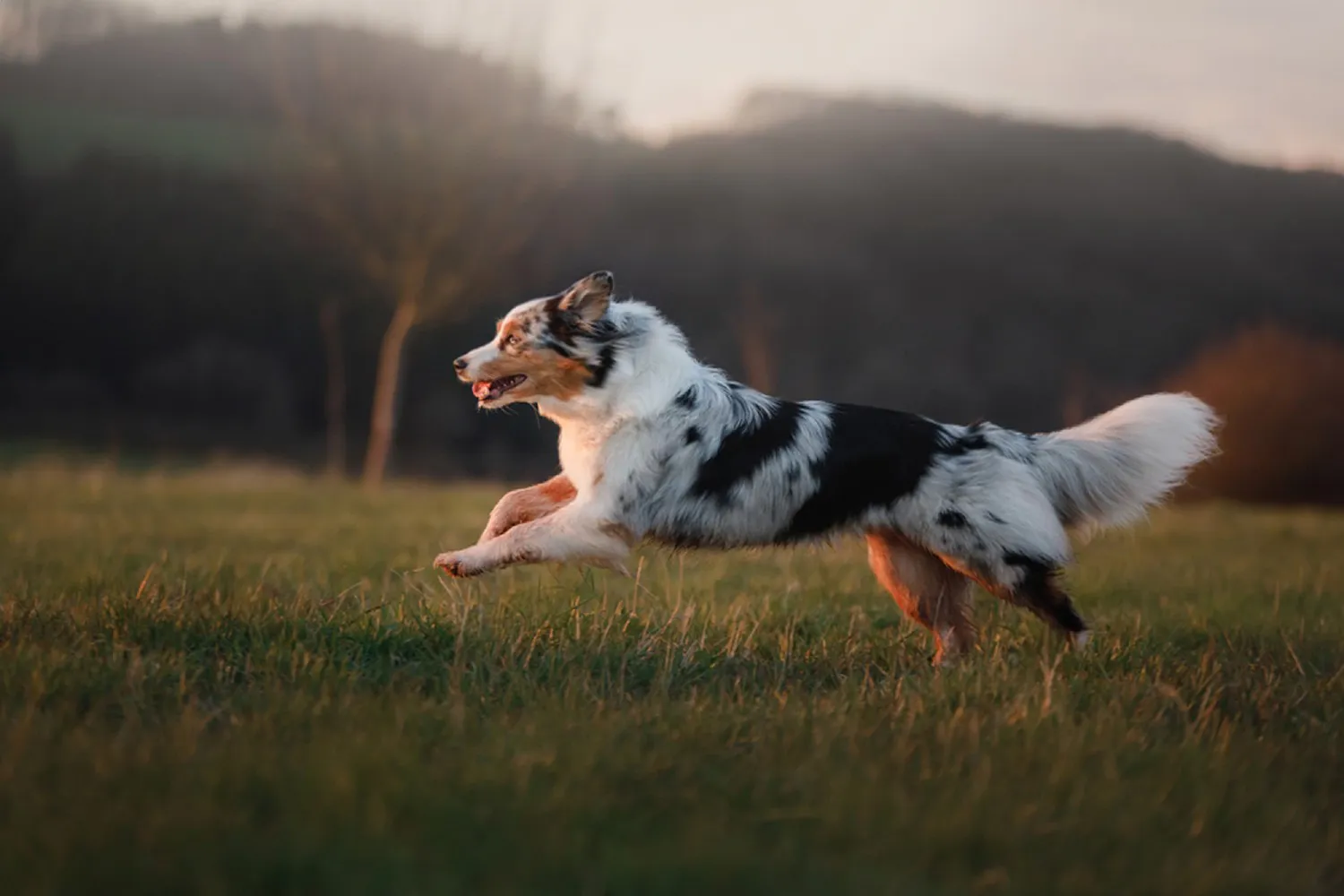
Who Are Australian Shepherds Best For?
Think of an Aussie as a high octane brain with a big, herding heart. They thrive with regular exercise and a confident, experienced owner who enjoys giving clear guidance. When they get their daily workouts and have someone steering the ship, their fun loving, affectionate, and child friendly side shines. My neighbor’s Aussie will tear up a trail run in the morning and then spend the afternoon gently snuggling the kids on the couch, happy as can be.
That famous herding instinct is the real deal. Aussies are bred to move livestock by nipping at heels, and if you don’t give them a job, they might try to “organize” your household. When I fostered an Aussie for a few weeks, he decided my visiting nephews were stray sheep and started nudging ankles to herd them toward the kitchen. Cute for one second, not so much the next. What helped: teaching a rock-solid “leave it,” giving him a herding ball in the yard to push around, and redirecting that energy into tug and structured fetch with a clear “drop.” A few short training sessions sprinkled through the day, plus mental puzzles, made a huge difference.
They’re also cheeky smart the kind of dog that notices patterns and exploits them. A friend’s Aussie figured out that the back door latch wasn’t fully clicked, then taught himself to nudge a stool under the counter to reach the treat jar. They’ll bamboozle you if you let routines get sloppy. Stay one step ahead: rotate toys, change up routes, use puzzle feeders, and keep training fresh. Consistency is key, and a good obedience class can work wonders. Think of it as giving that big brain a job, so mischief doesn’t become the hobby.
In the end, Aussies are ideal for households of any shape or size that want an intelligent, highly trainable, energetic partner in crime. Runners, hikers, frisbee tossers, active families who love parks and projects this is your dog. If you’re ready to provide daily exercise, mental stimulation, and clear boundaries, an Aussie will be the most devoted shepherd for your little flock. And yes, you’ll probably laugh daily at how cleverly they keep you on your toes.
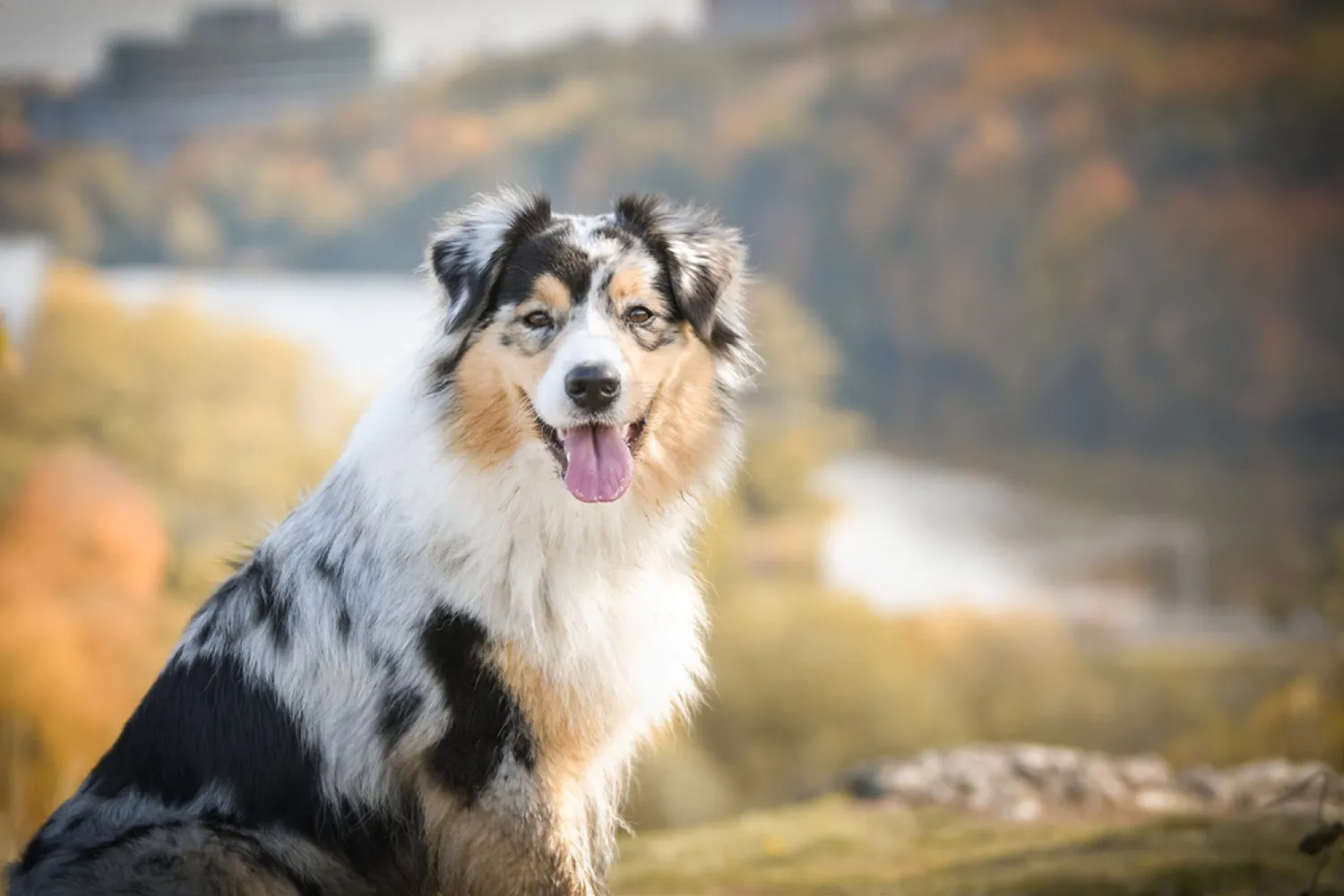
Grooming & Shedding
That gorgeous Aussie Shepherd coat isn’t just for show it’s a hardworking, weather resistant double layer that stays happiest with a little weekly TLC. I like to make it a Sunday ritual: coffee for me, a lick mat for my dog, and a gentle once over with a slicker brush to lift out surface fluff. I follow with a wide tooth comb behind the ears, under the collar line, and in those feathery “britches” on the back legs where sneaky tangles love to hide. Keeping the coat clean and brushed helps it stay soft and naturally water resistant.
Come spring and autumn, though, prepare for the fluff storm. That’s when I step up to regular warm baths, thorough brushing, and a fun blow dry to keep shedding under control. An undercoat brush every three days is a game changer during these seasons think of it as skimming off the spare fluff before it decorates your couch. I like to bathe with a dog safe shampoo, rinse really well, and then do the blow dry outside if I can. One time I learned the hard way and tried it in the hallway… let’s just say it looked like a snow globe exploded. A high velocity dryer (on a comfortable setting) helps “blow out” loose undercoat, and brushing while the coat is just slightly damp keeps the flyaways down.
Outside of shedding season, you can relax. If your Aussie rolls in something questionable (which they will), simply wash them when they get dirty and you’re good to go. I still do a quick weekly brush because it takes five minutes and prevents little knots from becoming big problems, but it’s more of a light touch than a full grooming session.
A few extra tips from the trenches: never shave an Aussie’s double coat; it can mess with their natural insulation. Keep a small pair of grooming scissors to tidy paw fur and check ears after hikes for burrs. Teach a “stand” cue to make grooming easier, and pay in treats my friend’s Aussie now trots to the grooming mat like it’s spa day. Consistency, patience, and the right tools make all the difference.
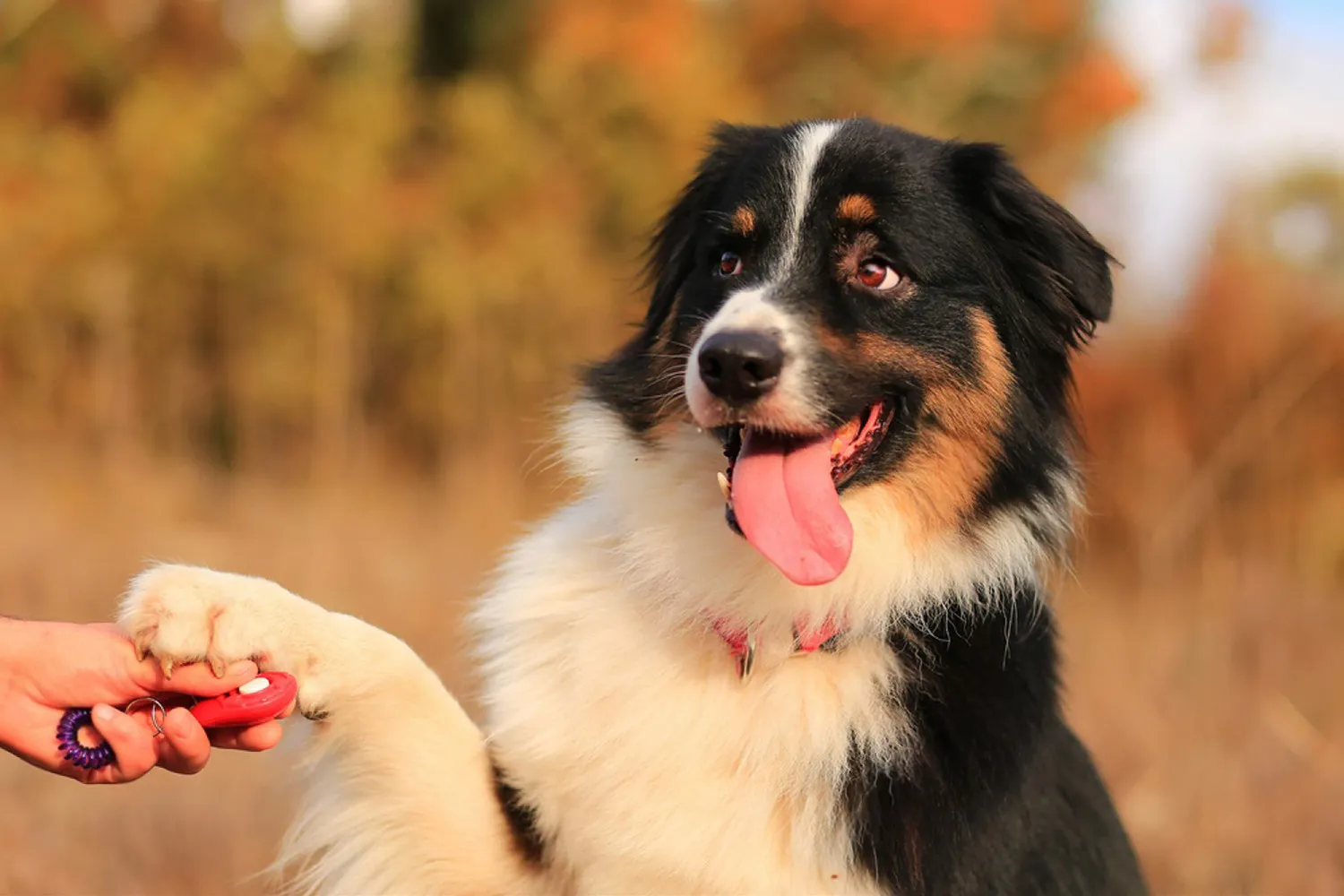
Barking (and how to manage it)
Aussies are bright, energetic, and a little opinionated, so if they don’t get enough physical and mental action, that energy often comes out as barking. I fostered an Aussie named Scout who would narrate the entire squirrel soap opera outside the window until we added a longer morning sniff walk, a quick 10-minute training session, and a stuffed Kong before my work calls. Like magic, the commentary dropped to a polite “woof.”
Give your Aussie a job and they’re happier and quieter: frisbee, agility, trick training, or a good puzzle feeder work wonders. Teach a reliable “quiet” after “speak,” and pay generously for calm settle on a mat is gold. Manage triggers by closing blinds during delivery hours or turning on soft background noise. Stay consistent, don’t reward the bark with attention, and redirect to something you want. With the right routine and training, barking becomes a manageable quirk, not a headache.
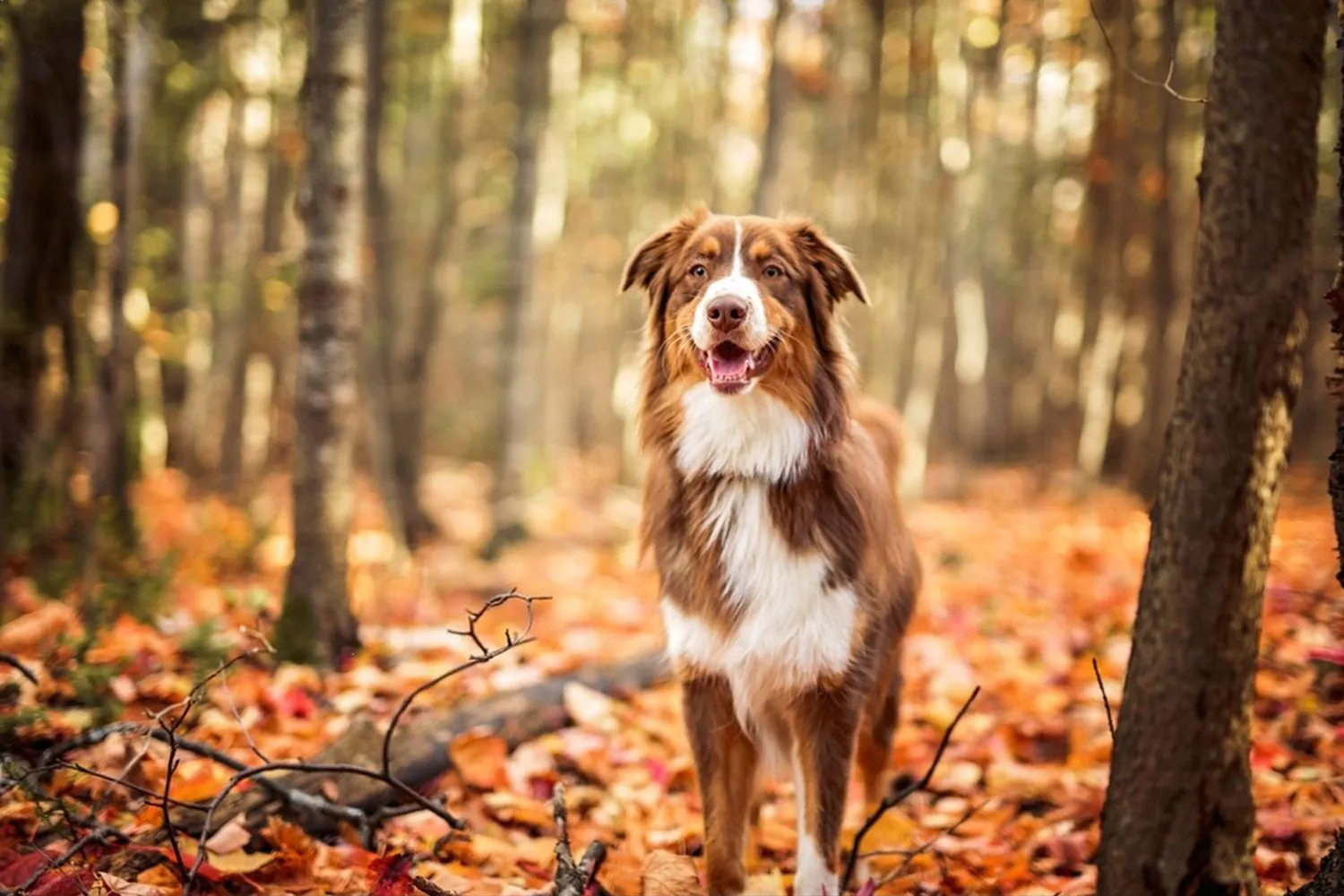
Weight & Size
Aussies hit that sweet spot of “just right.” They stand around 51 to 56 cm at the shoulder and, when fit, usually weigh 18 to 27 kg. Big enough to feel sturdy on a hike, yet compact enough to curl into your side on the sofa my boy still somehow thinks he’s a lap dog, and honestly, I don’t mind. They’re not as delicate as toy breeds or as overwhelming as the gentle giants, which makes everyday living car rides, city walks, even vet visits pretty manageable. https://en.wikipedia.org/wiki/Australian_Shepherd
Weight can vary with genetics and gender, so don’t panic if yours is on the lighter or heavier end of that range. Aim for healthy, not “hefty.” I like the simple rib test: you should feel ribs with light pressure, but not see them sticking out. Regular weigh ins help too; I pop mine onto the vet’s scale every few months. During the 12-18 month growth spurt, they often shoot up first and fill out later, so adjust food gradually and watch body condition rather than the number on the bag. A good, adjustable harness and a bed with a little legroom are wise picks Aussies love to sprawl after those fluffy cuddle sessions.
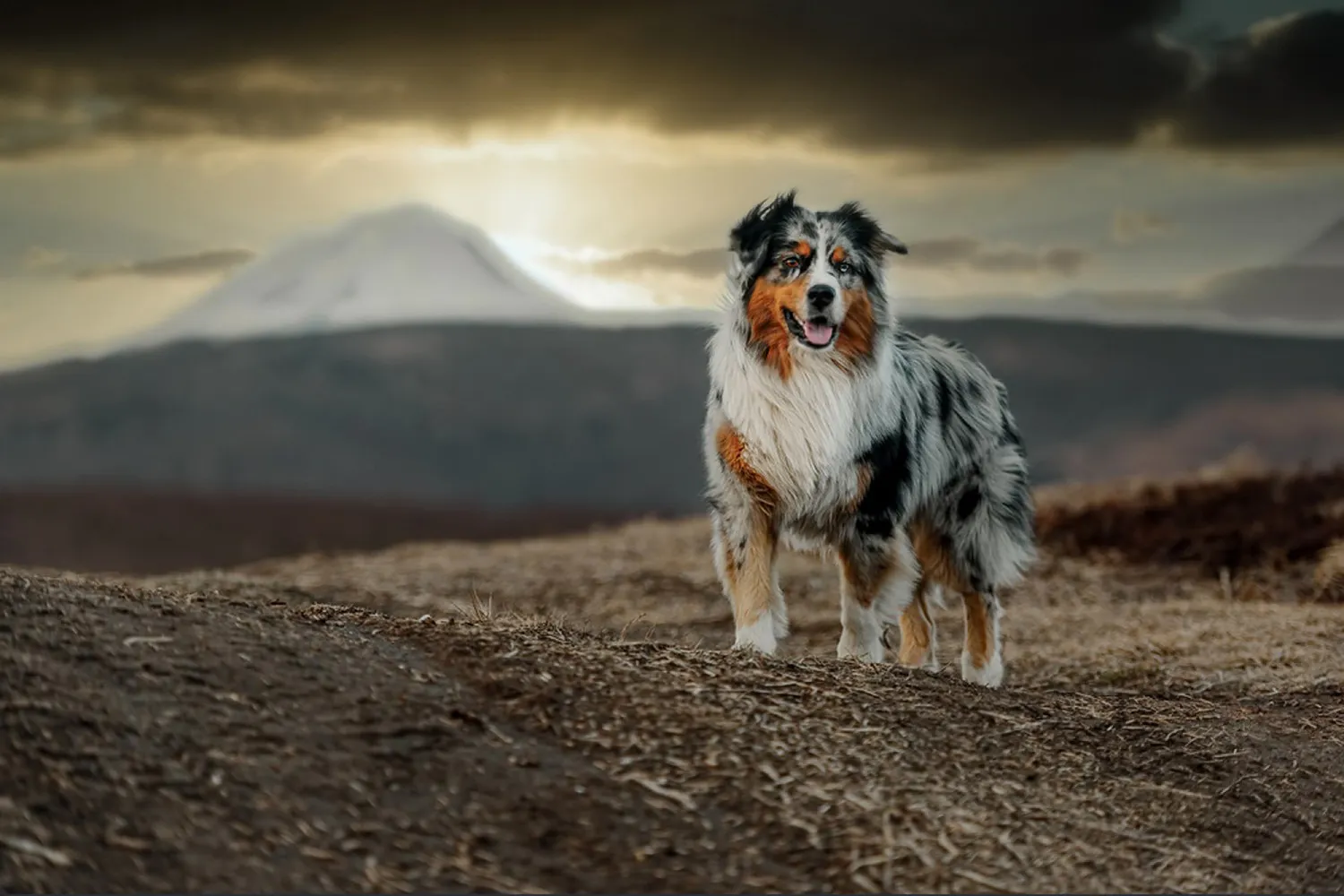
Australian Shepherd Training
Aussies are the kind of smart that makes you do a double take one minute they’re mastering “sit,” the next they’re figuring out how to open the treat drawer. While they won’t balance your checkbook, with the right training they can absolutely pitch in around the house. I taught my Aussie to carry socks to the laundry basket, and I swear the proud little prance he does on the way there is half the reward.
Because they’re so sharp and eager, Aussies tend to pick up new skills faster than many breeds. The trick is starting early. From the moment your pup comes home, make socialization and basic obedience part of everyday life. Short, cheerful sessions of sit, down, stay, and come build a foundation and don’t forget the “off switch.” A settle on a mat with a chew taught my dog when it was time to relax, not just zoom. I used to bring mine to watch a kids’ soccer game from a distance, rewarding calm behavior as strollers rolled by and whistles blew. That kind of gentle exposure pays off for years.
Lean into their herding instincts with jobs and games that make sense to them. Fetch with a wait, frisbee in soft arcs, hide and seek with toys, or even beginner agility in the backyard keeps their brain buzzing. My friend’s Aussie adores treibball nudging a big exercise ball into a goal like it’s a runaway sheep. House “chores” are fair game, too: carrying light laundry, bringing you the leash, or putting toys in a bin. Break tasks into tiny steps, use lots of praise or a clicker, and keep sessions five to ten minutes so they end eager for more.
Consistency and kindness are your best tools. Aussies thrive on clear routines, patience, and plenty of mental work alongside physical exercise. Start young, channel that exuberance into useful skills, and you’ll build a bond that makes training feel less like work and more like a team sport you both love.
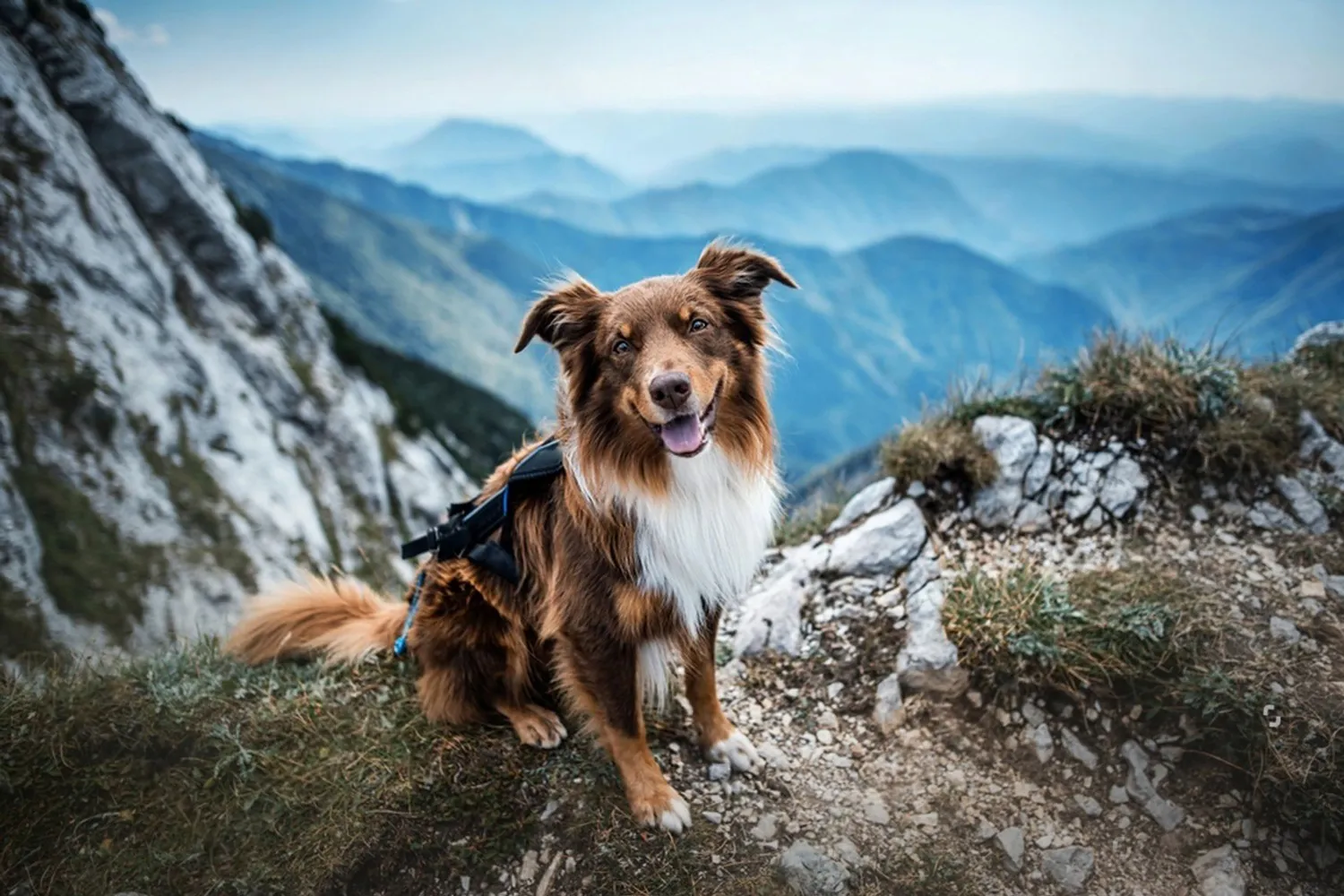
Temperament & Personality
Give an Australian Shepherd a job and a bit of structure, and you’ll see their best self shine through. When their brain and body are engaged, Aussies are wildly fun, attentive, and comically playful like a best friend who’s always up for a hike, a game of frisbee, or learning a new trick. Mine once learned “spin,” “crawl,” and “touch” in a single rainy weekend just because we needed to burn off steam indoors. With regular training, clear routines, and plenty of stimulation, they settle into a confident, even tempered companion who can go from action hero to couch snuggler in a heartbeat.
Of course, that same smarts and energy combo can go sideways if their needs are underestimated. An underworked Aussie will invent their own entertainment: digging craters in the backyard, barking at every leaf that twitches, or trying to herd kids, cats, and delivery drivers alike. I once dogsat an Aussie who, after a lazy week, started rearranging my shoes by color impressive, but also a hint he needed a proper outlet. Left unchecked, frustration can bubble up into pushy behavior and, in some cases, unwarranted aggressiveness. It’s not “bad,” it’s boredom with a capital B.
The fix is early, consistent training and lots of purposeful activity. Start as soon as your puppy comes home, or look for an adult whose training foundation is already in place. Short daily sessions make a big difference think impulse control games like “wait,” “leave it,” and “settle,” plus puzzle feeders, scent games, and trick training. Two solid workouts a day is a sweet spot for many Aussies; agility or herding lessons are icing on the cake. A breeder I spoke with in Colorado laughed that her dogs are happiest after an hour of “real work,” then they flop at her feet like rugs. Meet their needs, and you’ll enjoy their dazzling, bouncing nature wrapped in a steady, loving temperament. Ignore them, and, well… prepare for creative home renovations.
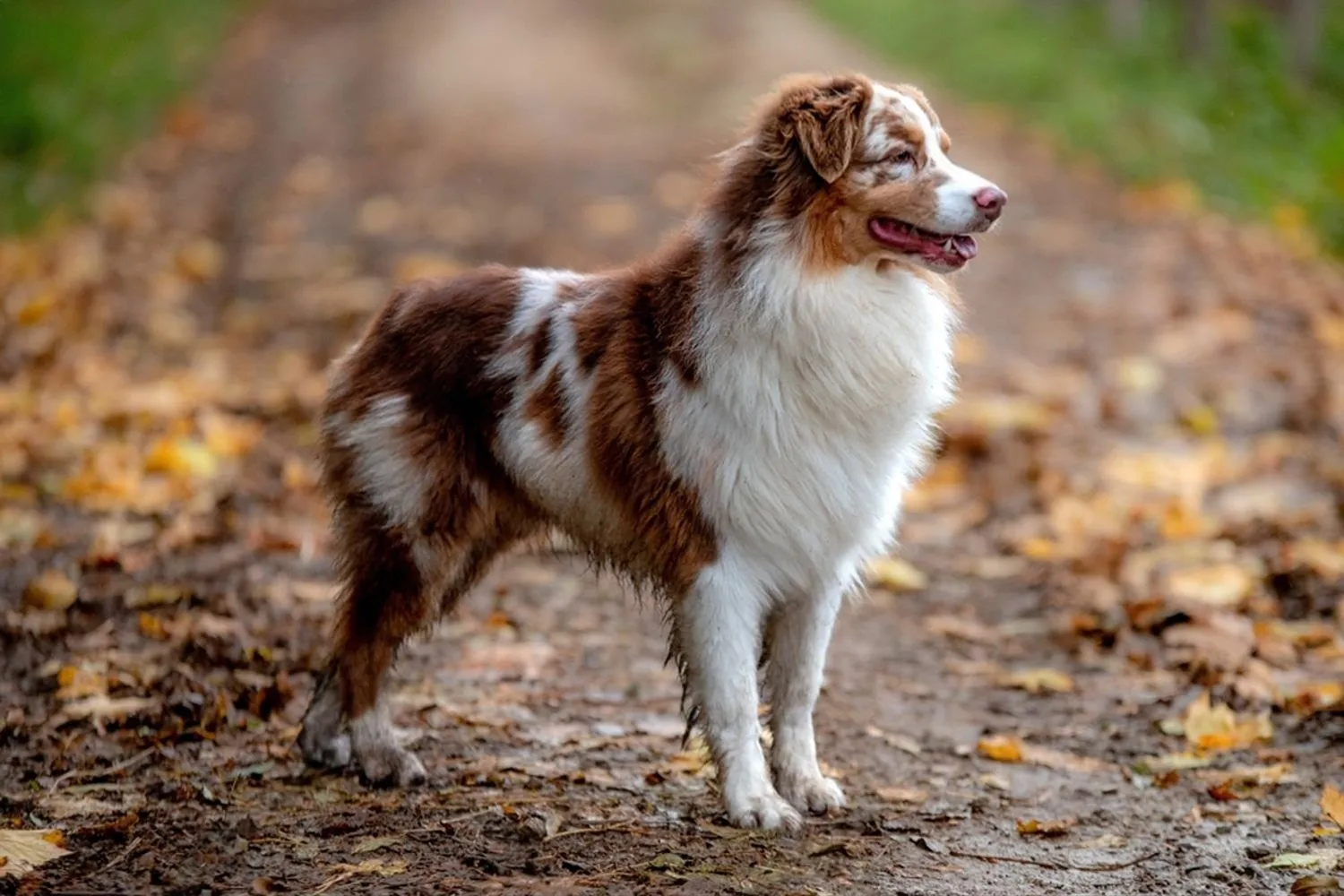
Australian Shepherd Health Issues
Aussies are sturdy, hard working dogs, but no breed is completely worry free. Over the years with my own herding dogs, I’ve learned that the healthiest start comes from a careful breeder who prioritizes sound genetics. Good breeders stack the deck in your favor by screening their dogs and selecting lines with fewer problems. For Australian Shepherds, the big concerns to ask about are hip dysplasia, cataracts, certain cancers, and epilepsy.
When you’re talking to breeders, don’t be shy about asking for proof. You should be able to see hip evaluations (OFA or PennHIP), eye clearances from a board certified ophthalmologist, and genetic test results for issues commonly tracked in Aussies. Many also test for the MDR1 gene variant, which affects sensitivity to certain medications super useful to know. A solid breeder will explain their health guarantees in plain language and happily show you paperwork. If all you get is “the vet said they’re fine,” that’s your cue to keep looking. I once drove two hours to meet puppies and walked away because there were no test results hard in the moment, but absolutely the right call. By contrast, another breeder handed me a tidy folder with every clearance and even grandparents’ eye exams. That level of transparency speaks volumes.
Health doesn’t stop at pickup day, of course. Keep your Aussie lean to protect those hips, use joint friendly exercise while they’re still growing, and schedule regular vet and eye checks. Watch for subtle changes cloudy eyes, stiffness after play, odd limping, or any seizure like episodes and call your vet if something seems off. If you’re adopting through a rescue, ask what they know about the dog’s history and plan a thorough baseline exam. And one last tip from experience: consider pet insurance or a rainy day fund. Aussies are bundles of joy and zoomies, and a little preparation goes a long way toward keeping that tail wagging for years.
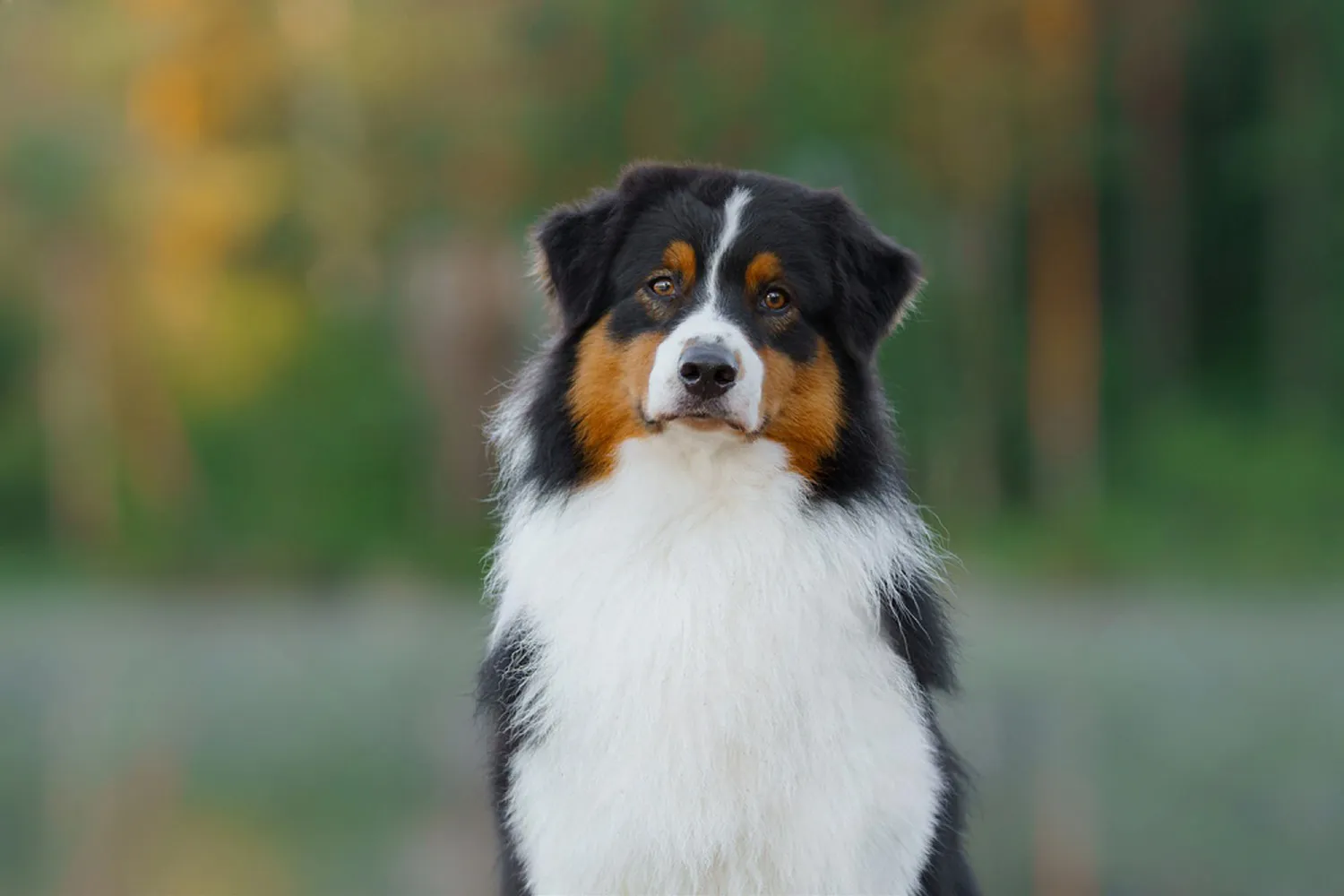
Lifespan
Australian Shepherds typically live 12-16 years, which is right in line with other medium sized breeds. With good care, many Aussies happily trot well into their teens. My neighbor’s old boy, Scout, hit 14 and still insisted on doing a quick “patrol” of the yard every morning, tail wagging like he had a job to do.
What helps them reach the higher end of that range? Consistent exercise and mental work, for starters. Aussies are working dogs at heart give them a daily routine of brisk walks, fetch, and brain games like scent work or puzzle toys. Keep them lean; my vet always says you should feel ribs without seeing them. Quality food, regular dental care, and yearly vet checkups (twice a year once they’re seniors) go a long way. It’s also smart to keep an eye on common breed concerns like hip and elbow issues or eye problems catching things early can keep them comfortable for years.
As they transition into their golden years around 8-10, adjust the routine. I switch to shorter, more frequent walks, warm up before any enthusiastic frisbee sessions, and add cushy beds plus rugs for traction on slippery floors. Gentle strength work, simple training refreshers, and lots of snuggle time keep them happy and engaged. Do that, and you’ll have a lively companion who stays bright eyed and bossy in the best Aussie way well into their senior season.
Feeding Your Aussie Shepherd
Aussie Shepherds are busy, bright dogs, and they do best on a well-balanced, high-quality diet tailored to their life stage puppy, adult, or senior. Look for complete and balanced formulas, or work with your vet if you’re considering a home cooked plan so nothing essential is missing. I always measure meals with a scoop instead of eyeballing; my first Aussie could empty a bowl in 30 seconds and then swear he hadn’t eaten. Puppies usually do well with three to four smaller meals, while most adults are happy with two set mealtimes.
Treats are your best friend for training and mental stimulation, but they’re like pocket change easy to overspend. Keep them tiny and let them count toward the day’s calories. I often use part of my dog’s kibble as training rewards and sprinkle in a few high value bits (a pea sized piece of freeze dried meat) for tricky cues. Puzzle feeders and stuffed toys are great, too; they slow enthusiastic eaters and give those quick Aussie brains a job.
These dogs can pack on pounds faster than you’d think, especially under that fluffy coat. I do a quick body check each week: you should be able to feel ribs without digging and see a slight waist from above. Adjust portions on heavy activity days and lighter ones, keep fresh water out, and avoid constant table scraps those pleading eyes are powerful. If you need to switch foods, go slow over a week to keep tummies happy. A little planning goes a long way toward keeping your Aussie lean, shiny, and ready for adventure.
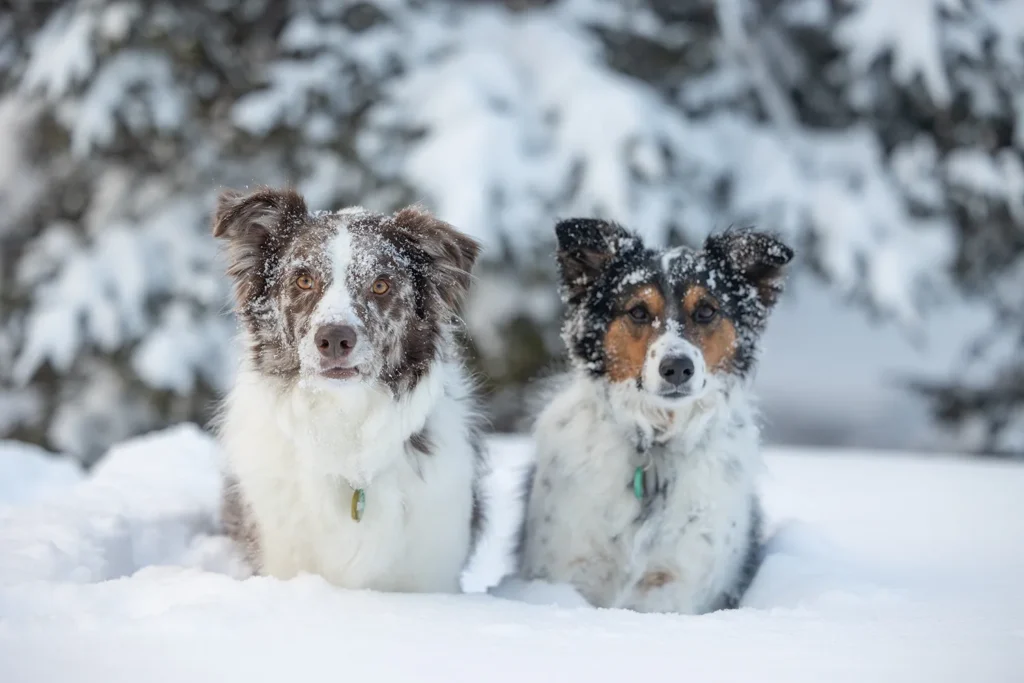
Australian Shepherd FAQs
Are Australian Shepherds good pets?
Absolutely especially if you’re the outdoorsy type. Aussies thrive with owners who enjoy an active lifestyle that matches their energetic nature. Think long hikes, weekend adventures, and plenty of playtime. With early training and clear routines, they grow into loyal, affectionate companions who really want to be part of everything you do. My neighbor’s Aussie, Scout, joins him for trail runs and then snoozes happily under the café table while we grab coffee. If you’re looking for a couch only buddy, this isn’t the breed. But if you want a sidekick who’ll keep you moving and smiling, an Aussie can be a dream.
Are Australian Shepherds intelligent?
Aussie Shepherds are incredibly smart working dog smart. That’s why they shine at learning tricks, jobs, and sports. The flip side is they need regular mental and physical stimulation to stay happy and well behaved. Bored Aussies invent their own entertainment, and you might not love their ideas! I rotate puzzle toys, do short training sessions after breakfast, and mix in things like hide and seek or a “find it” sniff game. A few minutes of brain work goes a long way. If you like teaching new skills and having a dog who learns fast, you’ll have a blast with an Aussie.
How big is a typical Australian Shepherd puppy?
Growth can vary, but here’s a helpful guide. A typical male Aussie puppy weighs about 1.3-2.3 kg at one month old and often gains roughly 2.5-4.5 kg each month as he grows, reaching full maturity around two years old at about 18-27 kg. Female pups usually start around 1-1.8 kg at one month and typically mature to about 18-24 kg by the time they’re fully grown. In my experience, they shoot up in height first and then fill out, with most reaching adult height in the first year and muscling up into year two. I like doing a quick weekly rib check and keeping growth charts handy your vet can help you make sure your pup is gaining at a healthy pace.
Is an Australian Shepherd a calm adult dog?
Yes with the right routine. Aussies are energetic and bright, so they need daily outlets for both body and brain. But give them good exercise, solid training, and regular mental challenges, and they settle beautifully. After a brisk walk, a game of fetch, and 10 minutes of training, my friend’s Aussie will curl up at her feet like a cozy little rug. That’s the balance you’re aiming for: an active partner outdoors and a calm, family friendly companion inside. A tip I love is to schedule “off switches” into the day structured play, then a chew or puzzle toy, then a nap. It teaches them that relaxing is part of the routine.
Quick advice to keep in your back pocket: start training early, keep sessions short and fun, give them jobs (even simple ones like carrying a toy or practicing place), and don’t underestimate a good sniffy walk. Do that, and your Aussie will shine.
Disclaimer:
This article is for informational purposes only and doesn’t replace professional veterinary or training advice. Always consult a certified vet or dog trainer for guidance specific to your pup.
